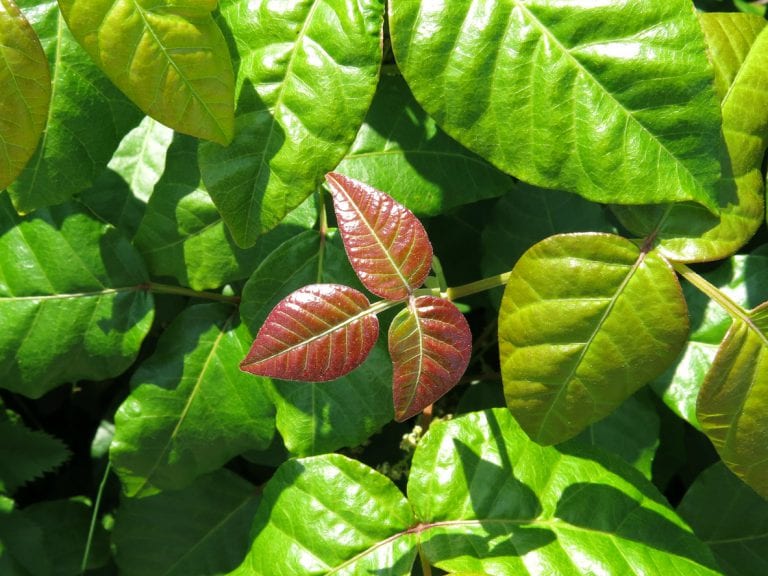Healthcare 101: Top Treatments for Poison Ivy
March 11, 2021

Maybe you’ve heard the phrase, “Leaves of three, let it be.”
That common saying refers to a plant grown in areas that are home to 85% of the U.S. population — poison ivy.
But avoiding poison ivy and its rash can be more complicated than simply avoiding plants with three leaves.
Read ahead to learn how to spot poison ivy, and what to do if you’re affected by a rash.
Poison Ivy vs. Similar Plants
Poison ivy is a plant that grows in most North American regions with only a few exceptions (like the Arizona desert). It is often confused with two plants that cause a similar rash: poison oak and poison sumac. These three plants can be identified by their leaves:
Poison Ivy
Most types of have three pointed leaves that change color with the seasons. The leaves are typically glossy and can have smooth or toothed edges. On the west coast, the plant grows as a vine, but in the east, it is more likely to be a shrub. It has greenish-white blooms and whitish-yellow berries.
Poison oak
This plant has fuzzy green leaves, usually three in a cluster. The leaves may be lobed or have rounded tips, and they tend to be heavily veined. Like poison ivy, poison oak can grow as a shrub or as a long vine. This plant sometimes produces yellow-white berries.
Poison sumac
This plant looks more like a small tree. The leave clusters have up to 13 distinct leaflets, and it can grow a whitish-green fruit.
Poison Ivy Symptoms
Most people who come in contact with poison ivy develop a rash, although not everyone is allergic to this plant. The red, itchy rash of poison ivy can blister and swell.
The reaction to poison ivy develops anywhere from 12 to 48 hours after contact, and it usually lasts up the three weeks. Home remedies can be helpful for many people, but you should visit a healthcare professional if your symptoms persist or worsen after home treatment.
Poison Ivy Treatment
Prevention is the best tool when it comes to fighting poison ivy. If you enjoy hiking or other outdoor activities that could involve exposure, plan to wear a long-sleeved shirt and long pants to reduce your risk of contact. A hat and closed toed shoes will protect other at-risk areas.
If you suspect that you or a pet have been in contact with poison ivy, wash the skin, preferably within 30 minutes of exposure. Use soap to remove the oil from the plant and then rinse. Repeat this step again just to ensure you thoroughly clean the skin.
Also scrub underneath your nails in order to remove the oil. Apply an over-the-counter poison ivy lotion barrier cream with zinc to keep the oil from penetrating the skin after cleaning.
If the rash develops, use cold compresses and an oatmeal bath to soothe the irritated skin. Apply a homemade poison ivy remedy made from baking soda and water to help, as well. Other options include:
- Calamine lotion
- Aloe vera gel
- Hydrocortisone cream
- Oatmeal bath
A poison ivy rash is extremely common, especially during the summer. Most likely it will take a combination of treatments along with a little time to reduce the itch and the tendency to scratch, which opens up the skin.
If you develop a fever, signs of infection or have problems breathing, get medical help immediately. If you think you’ve been affected by a poison ivy allergic reaction, reach out to an urgent care center near you to make an appointment.
